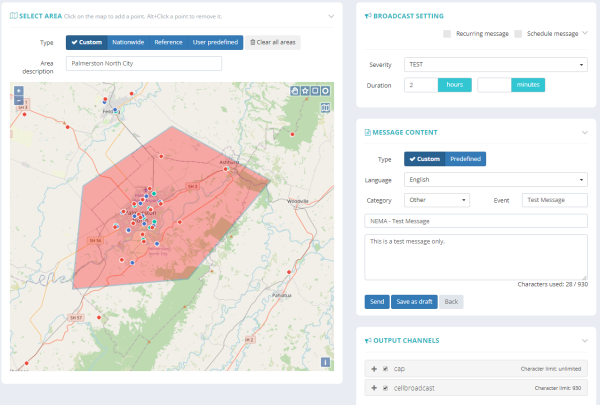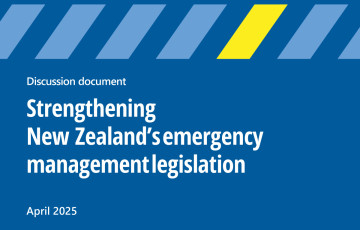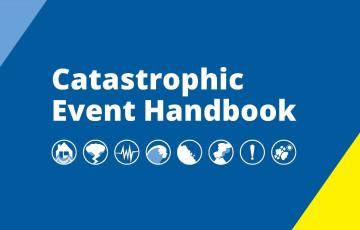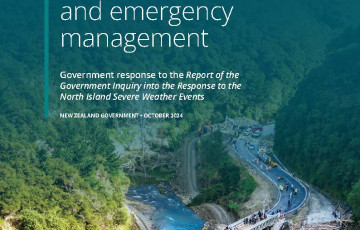CAP feed for Emergency Mobile Alert is now live
The new CAP feed allows EMA messages to be distributed by other systems that only need to be connected to the internet, so EMA life safety messages can get to people who are out of network coverage.
What is a CAP feed?
Warning messages can be formatted in Common Alerting Protocol (CAP), an XML-based open, non-proprietary digital message format for exchanging all-hazard emergency alerts. New Zealand catalogued CAP as a standard for exchanging warnings in 2018.
A CAP feed can present a list of warning messages in either of the common feed formats, RSS and Atom.
What does it look like?
The image below shows a test message being prepared for the Emergency Mobile Alert system.

All key elements of this are captured in the CAP message below.
What does that mean for EMA?
Emergency Mobile Alerts are only received by mobile devices that are connected to the cellular network. The new CAP feed allows messages to be distributed by other systems that only need to be connected to the internet, so EMA life safety messages can get to people who are out of network coverage. NEMA are very keen for developers to enhance the reach of EMA by using this feed.
Whenever an Emergency Mobile Alert is issued, the same information is now made publicly available in two places: the RSS feed and the Atom feed. These URLs make the messages available to other systems to be re-used. This could be by smartphone apps, websites or other alerting hubs that use CAP as a basis. Your own agency may want to integrate the information into its website or apps.
How can you work with this CAP feed?
A test feed is available, and NEMA can work with you to synchronise your development path with our with test message feed. Contact us for further details.
Published: Jul 14, 2020, 2:58 PM



